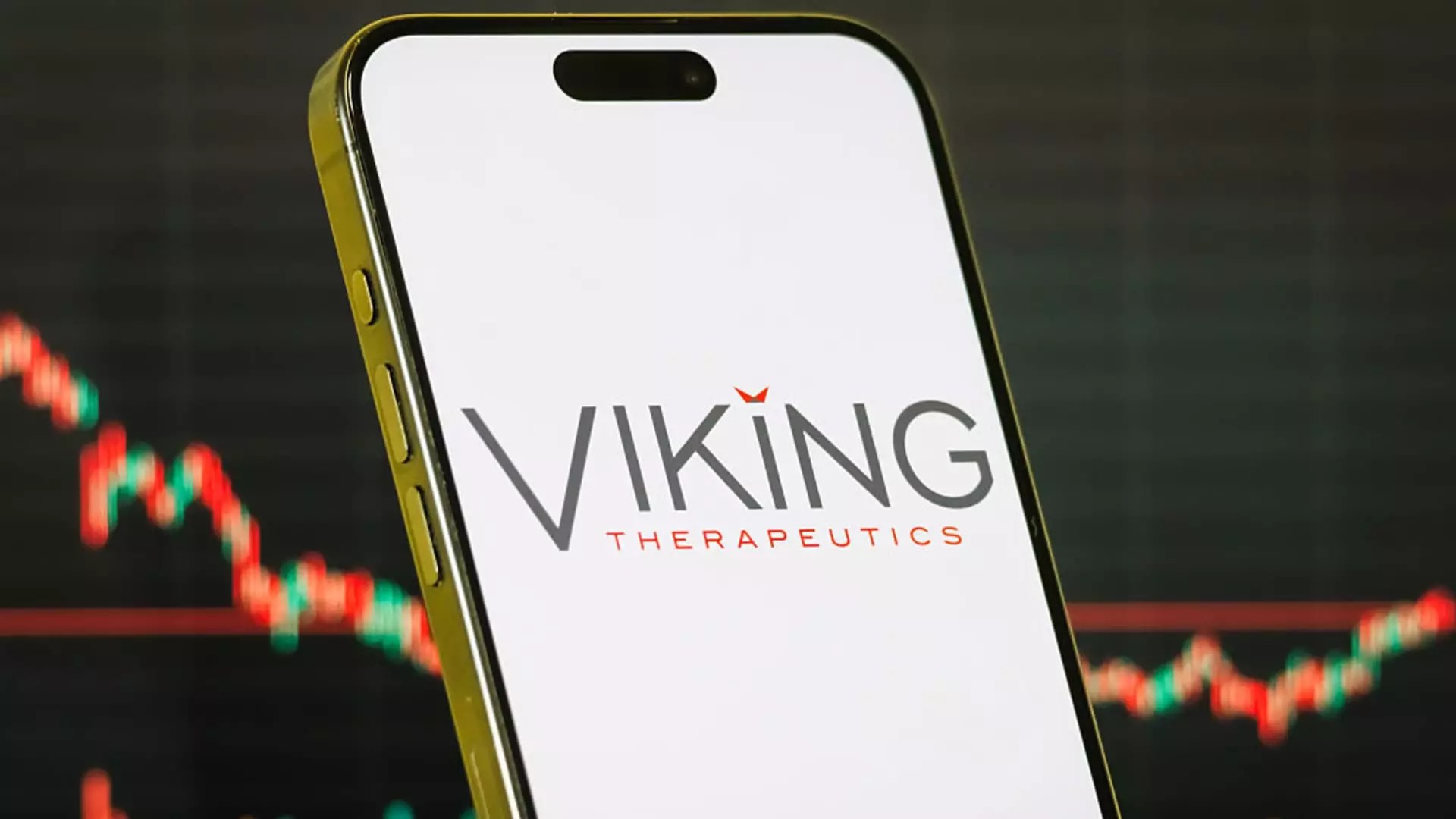The recent plummet of Viking Therapeutics’ stock highlights a sobering reality: not all promises in the biotech arena translate into tangible success, especially in the fiercely competitive and lucrative weight-loss industry. Once heralded as a promising contender, Viking’s mid-stage trial results serve as a harsh reminder that innovation alone doesn’t guarantee dominance. Instead, proven efficacy, manageable side effects, and long-term patient retention are the true currencies of success. The company’s failure to impress in these areas underscores a disconcerting truth: the road to a groundbreaking obesity pill is riddled with unrealistic expectations and unmet promises.
The biotech sector tends to be heavily swayed by early optimism, with investors often overlooking the complex scientific and clinical hurdles ahead. Viking’s case exemplifies this phenomenon — enthusiasm soared when the company announced a once-daily pill capable of inducing significant weight loss. However, the subsequent data reveal a stark contrast between hope and reality. The anticipated revolution in oral obesity treatments remains elusive, and Viking’s setback functions as a sobering wake-up call for those who cling to the notion that science always moves in a straight line.
The Illusion of a Level Playing Field: Dominance Crystallized by Giants
This setback does not exist in a vacuum; it underscores the mounting dominance of industry giants like Eli Lilly and Novo Nordisk. These companies have years of experience, significant resources, and strategic advantages, positioning them as the primary players in the obesity and diabetes drug markets. Viking’s inability to challenge their supremacy demonstrates the colossal barriers new entrants face, particularly when blockbuster drugs like Wegovy and Mounjaro continue to outperform newer contenders in both efficacy and safety profiles.
Furthermore, the notion that smaller biotech firms can leapfrog established pharmaceutical titans is increasingly questionable. The giants’ ability to refine their drugs over long periods, manage side effects, and demonstrate sustained weight loss prolongs their advantage. Viking’s patchy results, especially concerning high discontinuation rates and side effects, reveal the difficulty in developing an oral pill that can truly compete with the tried-and-true injectable formulations, which have already proven their efficacy and safety in large-scale trials.
The Challenge of Balancing Efficacy and Tolerability
One of the most glaring issues Viking faces, reflected vividly in the trial data, is the trade-off between efficacy and tolerability. The high incidence of gastrointestinal side effects — nausea and vomiting — threaten the long-term viability of such treatments. Patients, after all, are unlikely to continue with a medication that diminishes their quality of life, especially when alternative options offered by incumbents have demonstrated both efficacy and a more manageable side effect profile.
The data reveal that Viking’s pill, despite helping a significant portion of users lose weight initially, suffers from durability issues exacerbated by discontinuation rates. Nearly 28% of patients ceased using the medication within 13 weeks — a harbinger of the unsustainable nature of its current formulation. This reality underscores a broader critique of the biotech industry: therapeutic promises too often focus on short-term results, ignoring the critical importance of tolerability and patient adherence. Without a clear path to reducing adverse effects, such medications risk being little more than experimental failures rather than therapeutic breakthroughs.
The Future of Obesity Pharmacotherapy: Are We Chaseing Phantoms?
Ultimately, Viking’s struggles serve as a cautionary tale about the peril of overhyping early-stage results. The race to develop a convenient oral obesity drug is complicated by scientific challenges and market realities. While the idea of a once-daily pill is appealing, it may remain an elusive goal unless profound breakthroughs occur in understanding and managing side effects. Eli Lilly and Novo Nordisk, with their focus on injectable formulations targeting GLP-1, have gained a significant head start. Their ongoing willingness to optimize their drugs for improved safety, efficacy, and patient convenience leaves smaller competitors like Viking in a Sisyphean struggle.
There is an underlying implication that the relentless pursuit of rapid market entry may be overshadowing the importance of comprehensive clinical validation. Investors and developers alike might be falling into the trap of valuing innovation more than its practical translation into improved patient health. In this context, the biotech industry must recalibrate its priorities: efficacy must be paired with tolerability, and claims of potential market dominance should be tempered with rigorous scientific validation. Otherwise, the dream of a simple, effective, oral weight-loss pill might remain just that — a dream that’s long outlived its promise.

